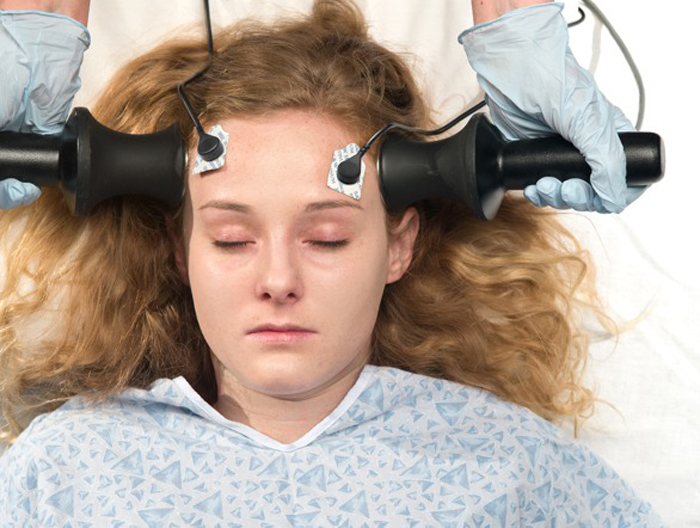CCHR says new UK research on electroshock “therapy” damage—given each year to 100,000 Americans, including children as young as five—should prompt review of U.S. studies and a ban on the practice.
By CCHR International
The Mental Health Industry Watchdog
August 18, 2020
Citizens Commission on Human Rights International, a mental health industry watchdog, praised new UK peer-reviewed research published in the journal Ethical Human Psychology and Psychiatry that found electroconvulsive therapy (also known as electroshock and ECT) has “no place” in evidence-based medicine due to risks of brain damage.[1] CCHR and others have long called for the practice that sends up to 460 volts of electricity to the brain causing a grand mal convulsion to be banned.
The researchers, which includes Prof. Irving Kirsch, an expert on placebo effects based at Harvard Medical School, concluded that, “the high risk of permanent memory loss and the small mortality risk means that its use should be immediately suspended.”[2]
CCHR was pivotal in getting it banned in California for children and adolescents. In Western Australia, they had ECT banned for this age group with criminal penalties if administered. It said the recent research paper goes to the heart of the issue of why a ban is necessary.
The review assessed the quality of five meta-analyses and the 11 studies on which they were based, and reported: “There have been no ECT versus simulated ECT (SECT) studies since 1985. The five meta-analyses of ECT versus SECT studies all claim that ECT is more effective than SECT for its primary target, severe depression.” However, the researchers debunked this, having found, “The quality of most SECT–ECT studies is so poor that the meta-analyses were wrong to conclude anything about efficacy, either during or beyond the treatment period. There is no evidence that ECT is effective for its target demographic—older women, or its target diagnostic group—severely depressed people, or for suicidal people, people who have unsuccessfully tried other treatments first, involuntary patients, or children and adolescents.[3]
CCHR called for a review of research and studies that psychiatrists and other mental health professionals presented to the FDA to convince the agency to lower the ECT device to a lower risk classification in 2018. Experts working with the group said the evidence relied upon was not scientifically valid. The Final Order on the ECT device failed to mention that electroshock causes brain damage.
The UK paper concedes that “the severity and significance of the brain damage and memory loss (following ECT) is rarely studied.” However, in 2018, a class action lawsuit was settled in the U.S. after a federal court ruled that a reasonable jury could find against manufacturers of ECT equipment if they failed to warn of the dangers of brain damage. One manufacturer, Somatics, immediately added “permanent brain damage” to the list of risks from the treatment.[4]
CCHR addresses brain damage and more in its latest documentary, Therapy or Torture: The Truth About Electroshock. Jan Eastgate, President of CCHR International, said: “We created Therapy or Torture not to upset people. Or to scare them. But instead, to move them into action to get electroshock banned. Already over 121,500 people have signed a petition in support of the ban.”
Eastgate appears in the documentary speaking about her experiences being subjected to electroshock 45 years ago when doctors misdiagnosed her underactive thyroid as “depression” and administered psychotropic drugs that worsened the underlying condition. She was then electroshocked ten times without being fully informed of the long-term damage it can cause.
Two-thirds of those who receive ECT are women, and the average age of ECT recipients is between 60 and 65.[5] But in the U.S., CCHR has discovered that five out of 18 states that responded to keeping statistics on ECT use, allowed delivery of electroshock to those in the 0-5 age bracket. Fifteen of the states reported elderly aged 65 and over were subjected to it in 2019, covered by Medicaid.
When Jack Nicholson’s character was subjected to ECT in the film One Flew Over the Cuckoo’s Nest, people were appalled that such a brutal procedure was even being used in contemporary mental health treatment. Banned in several countries, and restricted in many others, in the U.S. today, a reported 100,000 Americans are subjected to electroshock each year.
Celebrities that have been harmed by electroshock include Pulitzer Prize winning novelist Ernest Hemmingway; Sylvia Plath, American writer and poet; Judy Garland, actress and singer; Frances Farmer, American actress; Janet Frame, New Zealand writer and poet; Peter Green, English blues guitarist, founding member of Fleetwood Mac; Lou Reed, The Velvet Underground; Vivien Leigh, English actress; Paul Robeson, singer, actor and civil rights forerunner; Bud Powell, American jazz musician; and Emil Post, famous American mathematician who died in 1954 of a heart attack following ECT.[6]
Dozens of UK patients who underwent electroshock treatment are currently suing, alleging that ECT causes brain damage and they were never informed that electroshock could result in permanent memory loss and facial recognition problems, as well as trouble with basic everyday tasks like walking and reading.[7] Lawsuits are also mounting in the U.S.
Anyone who knows of someone damaged from electroshock can report this to CCHR.
References:
[1] “ECT depression therapy should be suspended, study suggests,” BBC News 2 June 2020, https://www.bbc.com/news/uk-52900074; “Electroconvulsive Therapy for Depression: A Review of the Quality of ECT versus Sham ECT Trials and Meta-Analyses,” Ethical Human Psychology and Psychiatry, Vol 21, Issue 2, July 2020, https://connect.springerpub.com/content/sgrehpp/21/2/64
[2] Ibid., BBC News
[3] Op. cit., Ethical Human Psychology and Psychiatry
[4] Op. cit., BBC News
[5] https://www.madinamerica.com/2020/06/new-review-finds-lack-evidence-support-ect/
[6] https://www.abc.net.au/radionational/programs/archived/intothemusic/paul-robeson/4691690
[7] “Dozens of patients sue the NHS over claims they suffered brain damage after having depression treatment of electrical currents through the head,” Daily Mail, 18 July 2020, https://www.dailymail.co.uk/news/article-8537431/Dozens-patients-sue-NHS-claims-suffered-brain-damage-having-therapy.html



SHARE YOUR STORY/COMMENT